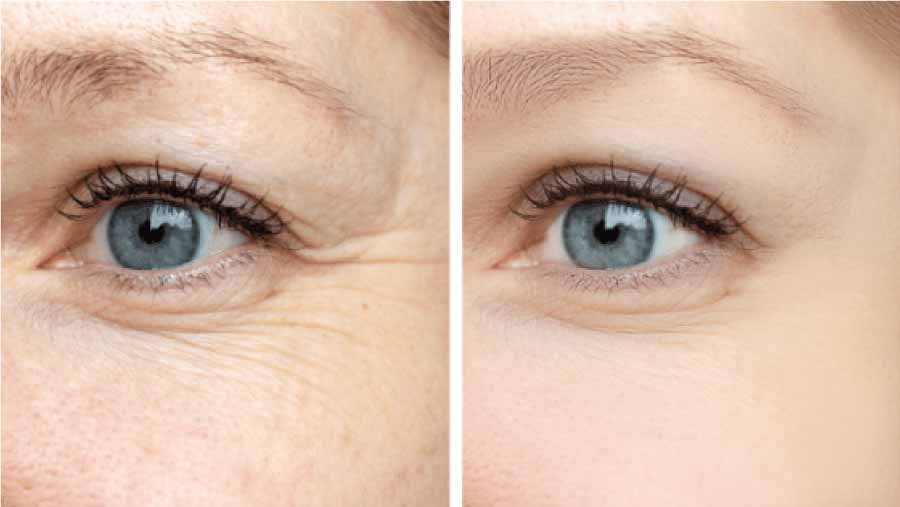Hair removal of intimate parts is an increasingly popular technique among men and women of all ages. Whether for aesthetics or hygiene, many people decide to remove hair from their intimate areas. However, this technique can be painful and uncomfortable if not done correctly. In this article, we will tell you everything you need to know about hair removal of intimate parts so that you can make an informed decision and take care of your intimate area in the best possible way.
What is hair removal of intimate parts?
Hair removal of intimate parts is the removal of pubic hair from the genital and anal area using different techniques. This technique is performed with the aim of maintaining a cleaner and more attractive appearance of the intimate area. In addition, hair removal of intimate parts can also improve personal hygiene and reduce body odor.
What are the techniques of hair removal of intimate parts?
There are different techniques for hair removal of intimate parts, among them are:
Hot or cold wax: This technique is the most common and consists of applying hot or cold wax on the area to be depilated and removing it in one pull to remove hair. This technique can be painful and cause skin irritation, especially in the genital area.
Razor: This technique involves using a razor to trim pubic hair. It is a simple and economical technique, but it can cause irritation and ingrown hairs.
Depilatory cream: This technique consists of applying a depilatory cream on the intimate area and removing it with a spatula or wet towel. This technique is less painful than wax, but can cause skin irritation and redness.
Laser hair removal: This technique is the most effective and durable, as it uses a laser to destroy hair follicles and prevent hair from growing back. However, it is an expensive technique and can be painful.
How to prepare for hair removal of intimate parts?
To prepare for hair removal of intimate parts it is important to follow the following tips:
Trim hair before hair removal: If you decide to use a hair removal technique that requires short hair, it is important that you trim the hair with scissors before hair removal.
Exfoliate the skin: Before hair removal, it is important to exfoliate the skin to remove dead cells and prevent ingrown hairs from occurring.
Clean the intimate area: It is essential that you clean the intimate area before hair removal to avoid infections.
Do not wax if you have irritated skin: If the intimate area is irritated or has some type of infection, it is best to avoid hair removal until the skin has fully recovered.
Do not use perfumes or scented creams in the intimate area: These products can irritate the skin and cause infections.
What precautions should I take after hair removal of intimate parts?
After hair removal of intimate parts it is important to follow these recommendations to avoid discomfort and infections:
Use comfortable clothes: After hair removal it is advisable to wear comfortable and cotton clothes to avoid irritation and breathing of the skin.
Do not use scented products: It is important to avoid using scented products in the depilated area, as they can irritate the skin.
Avoid sexual contact: After hair removal it is advisable to avoid having sex during the first hours or days to avoid irritations and possible infections.
Moisturize the skin: After hair removal it is important to moisturize the skin with a soft and unscented cream to avoid dryness and irritation.
Is hair removal of intimate parts painful?
Hair removal of intimate parts can be painful, especially if the hot or cold wax technique is used. However, most people get used to pain over time and learn how to manage it effectively. If the pain is too severe, anesthetic creams or applying ice to the depilated area may be used to reduce inflammation.
What should I do if ingrown hairs appear after hair removal of intimate parts?
Ingrown hairs are a common problem after hair removal of intimate parts. To avoid them, it is important to exfoliate the skin before and after hair removal. If ingrown hairs appear, exfoliating creams can be used or a warm compress applied to the affected area to relieve inflammation. You should never try to pull out an ingrown hair with your nails or a tweezers, as this can cause infections.
Is it safe to wax the anal area?
Hair removal of the anal area can be safe if done correctly. It is important to use gentle hair removal techniques and not apply too much pressure to the area, as this can cause irritation and infections. If you have doubts or are not sure how to perform hair removal of the anal area, it is advisable to go to a specialist.
What precautions should I take when going to a hair removal center?
If you decide to go to a hair removal center to perform hair removal of intimate parts, it is important that you take these precautions:
Ensure that the center complies with all necessary hygiene and safety measures to avoid infections.
Tell the specialist about any health conditions you may have, such as diabetes or circulation problems.
Ask about the hair removal techniques they use and make sure they are suitable for your skin type and pain tolerance.
Verify that the staff performing hair removal is trained and experienced in hair removal of private parts.
Do not wax if you have irritated skin or any type of infection.
How long does hair removal of intimate parts last?
The time it takes to hair remove intimate parts depends on the hair removal technique used and the amount of hair that must be removed. In general, waxing or laser hair removal can last between 20 and 60 minutes, while razor hair removal can take less than 10 minutes.
How long should I wait to re-shave my private parts?
The time you should wait to re-shave your private parts depends on the hair removal method you have used and the speed of hair growth on your body. In general, it is recommended to wait between 4 and 6 weeks to re-epilate with wax or laser, and between 1 and 2 weeks to re-epilate with a razor.
Is it necessary to shave the private parts?
Hair removal is not necessary, but many people prefer to do it for aesthetic or hygiene reasons. The decision to wax or not to wax is personal and should be based on your own preferences and needs.
What alternatives exist to hair removal?
If you prefer not to shave your private parts, there are alternatives such as trimming hair with scissors or using mild depilatory creams. You can also opt for less invasive hair removal techniques such as pulsed light hair removal or soft laser.
Conclusion
Hair removal is a common practice that requires caution and care to avoid discomfort and infection. Before performing hair removal it is important to inform yourself about the different techniques available and choose the one that best suits your needs. Remember to take precautions before and after hair removal, and go to a specialist if you have doubts or need help.


